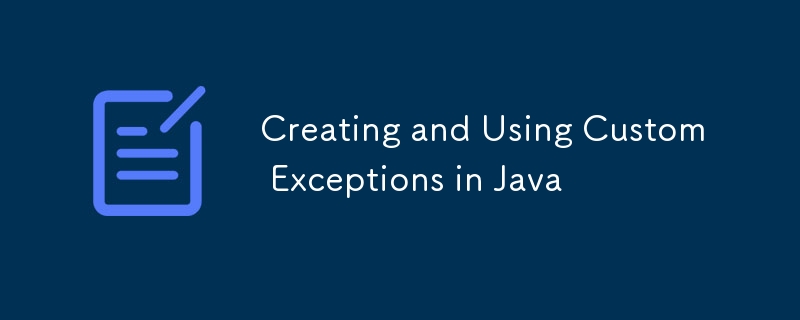Found a total of 10000 related content

How to create a custom log format to include more details?
Article Introduction:Custom log formats can improve log readability and analysis efficiency. The specific steps include: 1. Determine the fields to be recorded, such as client IP, request time, response time, status code, User-Agent, custom identifier, etc.; 2. Configure in different services, such as Nginx using log_format, Apache using LogFormat, Node.js using morgan middleware; 3. Pay attention to maintaining format consistency, avoiding sensitive information, adapting to log parsing tools, enabling log rotation and testing format validity.
2025-07-20
comment 0
438

JavaScript/jQuery Zip/File/Compressor Plugins
Article Introduction:A series of JavaScript/jQuery compression plugins that can be used to compress your JS code and JS files and package them into zip files. Enjoy it! Related posts:
10 online tools to help optimize and format CSS
10 core/client/server JavaScript key points
JSMini
Online JavaScript & jQuery compression tool. Free, easy to use, and extremely fast compression JS code compressor.
Source Code Demo YUI Compressor Maven Mojo
This plugin compresses static files at compile time.
Source code demonstration jquery.zipper.js
2025-02-27
comment 0
738

How to customize the welcome page in VSCode?
Article Introduction:Personalized customization of VSCode welcome pages can be achieved by installing extensions and custom configurations. 1. Install extensions such as "CustomWelcomePage", edit the index.html and style files it generates, and insert HTML, CSS or JS to change the content of the welcome page; 2. Use the "CustomizeUI" class plug-in to inject custom CSS/JS, and achieve deeper appearance control by hiding original elements or dynamically generating new content; 3. Modify startup parameters such as code--new-window or specified path, and combine with the local server to open the custom page by default. Although VSCode itself does not support it directly
2025-07-28
comment 0
585

Dealing with Asynchronous APIs in Server-rendered React
Article Introduction:Summary of key points
Server-side rendering of React code helps reduce loading times and improve SEO flexibility, but handling asynchronous APIs can be challenging because of the need to render the application before knowing the required data.
Existing solutions, such as Next.js, Redux Connect, and react-frontload, have their own advantages and disadvantages when dealing with asynchronous APIs in server- rendered React code.
A custom solution can be implemented by performing two server-side renderings: the first time handles API calls and asynchronous operations, and the second time, the second time, the final page rendering is performed using the acquired data.
Custom solutions require careful handling of different shapes in components
2025-02-16
comment 0
859

How to measure thread performance in C?
Article Introduction:Measuring thread performance in C can use the timing tools, performance analysis tools, and custom timers in the standard library. 1. Use the library to measure execution time. 2. Use gprof for performance analysis. The steps include adding the -pg option during compilation, running the program to generate a gmon.out file, and generating a performance report. 3. Use Valgrind's Callgrind module to perform more detailed analysis. The steps include running the program to generate the callgrind.out file and viewing the results using kcachegrind. 4. Custom timers can flexibly measure the execution time of a specific code segment. These methods help to fully understand thread performance and optimize code.
2025-04-28
comment 0
532

What is the defineModel macro in Vue 3.4?
Article Introduction:The defineModel macro solves the redundant code problem when custom components implement v-model in Vue3.4. 1. It automatically creates modelValueprop and update:modelValue events in it, 2. Supports custom attribute names and event names through parameters, 3. It can pass options such as types and default values, 4. As a compile-time macro, eliminates runtime overhead, 5. Makes the two-way binding of parent-child components more concise and efficient, and ultimately achieves less code, the same behavior, and clearer intentions.
2025-07-30
comment 0
873

Creating and Using Custom Exceptions in Java
Article Introduction:Custom exceptions can improve code readability and maintenance and are suitable for specific error scenarios in business logic. In Java development, standard exception classes such as NullPointerException and IOException can only express common errors and cannot accurately describe complex business problems, such as "insufficient user balance" or "illegal order status". At this time, using custom exceptions (such as InsufficientBalanceException) can allow the caller to understand the nature of the error more clearly. To create a custom exception, you only need to inherit Exception or RuntimeException and provide a constructor with String parameters; if you need an unchecked exception,
2025-07-23
comment 0
762

Split Fiction: How to Stop Phone Self-Destruct in Neon Revenge
Article Introduction:In Neon Revenge's "Second Gravity Bike Chase" level, you need to complete the verification code challenge on your phone while avoiding obstacles at high speed. If it fails to complete in time, your phone will destroy itself—which is obviously awful.
After successfully completing the verification code, you will receive an achievement/trophy "You are not a robot".
How to complete the verification code smoothly
Note: The verification code will pop up during the pursuit, please be vigilant.
Follow the instructions carefully – you may need to select an image, enter a verification code, or click the check box.
Complete safely, don't rush - If something goes wrong, the countdown to self-destruct will be accelerated.
Resolve verification codes while avoiding collisions – If you hit an obstacle, your phone may be knocked away to complete verification
2025-03-17
comment 0
1159

What is the User Timing API for?
Article Introduction:The main purpose of UserTimingAPI is to help developers accurately measure the performance of web applications on the user side. It creates custom time marks through performance.mark(), recording the time points of key events in the code, such as "Data request start" and "First screen content rendering is completed". Next, use performance.measure() to calculate the time-consuming between two markers, making it easier to analyze asynchronous operation performance. In addition, PerformanceObserver can listen to performanceentry in real time, which is suitable for long-term data acquisition in performance monitoring systems. Overall, the API provides fine-grained performance analysis capabilities that help position pre-localization
2025-06-27
comment 0
198

What is the difference between and tags?
Article Introduction:Used to inline code snippets, while retaining the formatted blocks of text. 1. Applicable to small segments of code in sentences, displayed in monospace fonts by default, without retaining spaces and line breaks; 2. Keep all whitespace characters and line breaks, suitable for multi-line code or text that needs to be kept in format; 3. Both can be used in combination to obtain semantic and format reservations at the same time; 4. Usually, custom CSS styles are required to enhance the appearance.
2025-07-21
comment 0
726

How to Use Code Snippets in Atom
Article Introduction:Atom Editor Code Snippet: Efficient Code Reuse Tool
Code snippets are reusable code blocks that can quickly insert program files and are the core function of Atom text editor. Predefined fragments are usually provided with Atom packages and language syntax.
Custom snippets.cson files located in your ~/.atom folder. They require language identifiers, names, trigger text, and fragment body code (optional tabs).
Fragments can be used in any programming language supported by Atom, just specify the correct scope of the language when defining the fragment. They can contain variables and can be used to insert common code blocks, saving time and ensuring code consistency.
Code snippets are a process you can insert quickly
2025-02-19
comment 0
1073

How to handle errors when converting strings to objects in Vue.js?
Article Introduction:Methods to convert strings to objects in Vue.js: It is feasible to use JSON.parse() directly, but it requires extremely high string formats. A safer way is to write custom functions and add fault tolerance mechanisms, such as try...catch statements, to avoid program crashes. At the same time, be careful to avoid frequent calls to JSON.parse() to ensure the readability and maintainability of the code.
2025-04-07
comment 0
956

Using MapStruct for Painless Bean Mapping in Java
Article Introduction:MapStruct is a compile-time code generator used to simplify mapping between JavaBeans. 1. It automatically generates implementation classes by defining interfaces to avoid manually writing lengthy set/get mapping code; 2. It has type-safe, no runtime overhead, supports automatic mapping of the same name fields, custom expressions, nested objects and collection mapping; 3. It can be integrated with Spring and uses @Mapper(componentModel="spring") to inject mapper into Springbean; 4. Simple configuration, just introduce mapstruct dependencies and annotationProcessorPaths inserts
2025-07-28
comment 0
169

Utilizing CSS Custom Properties for Dynamic Styling
Article Introduction:CSS custom properties are a key tool for implementing dynamic styles. 1. Custom attributes start with --, such as --main-color, defined in:root and called through var() to improve code maintainability; 2. Dynamic changes in theme colors are achieved through class name switching, combining JavaScript and local storage to support user preferences; 3. CSS variables can be modified in real time through JavaScript, which is suitable for color selectors, A/B testing and other scenarios; 4. Pay attention to avoiding nested use of var(), which is incompatible with IE, and the downgrade solution needs to be handled reasonably.
2025-07-06
comment 0
948

Customizing Error Handling and Exception Reporting in Laravel
Article Introduction:Laravel provides flexible error handling mechanisms to improve application robustness through custom exception handlers. 1. Modify the render method in the default exception handler App\Exceptions\Handler to realize the unified JSON error format of API requests; 2. Create a custom exception class (such as OrderPaymentFailedException), throw it in business logic and handle it in Handler, to enhance code clarity and scalability; 3. Configure log drivers and integrate Sentry and other third-party monitoring services to report production environment errors in real time, facilitate quick positioning of problems; 4. Pay attention to testing exception responses, avoid leaking sensitive information, and distinguishing HT
2025-07-05
comment 0
816

PHP header location vs javascript redirect
Article Introduction:The jump mechanism of PHP ("Location:...") and JavaScript are different from the applicable scenarios. 1. The execution time is different: PHP is a server-side jump, and the browser jumps immediately after receiving the response, and does not depend on whether JS is enabled; JS is a browser-side jump, and the page is executed after the page is loaded, and it will be invalid if JS is disabled. 2. SEO friendly: PHP is more suitable for SEO, supports 301/302 status code, which is conducive to search engine recognition; JS is not friendly enough to crawlers. 3. Interactiveness: JS is more flexible and suitable for jumping based on user behavior or conditions. 4. Security and limitations: PHP uses header()
2025-07-12
comment 0
840

What are some recommended Sublime Text packages for web development?
Article Introduction:SublimeText's best package improves web development efficiency. 1. Emmet quickly generates HTML/CSS code, such as using the abbreviation div.container to automatically generate complete tags, and supports nested and duplicate elements; 2. SideBarEnhancements enhances file management, providing new templates, trash can move, right-click browser opening and other functions; 3. CSScomb automatically organizes the order of CSS attributes, improves readability and maintenance, and supports custom sorting rules; 4. GitGutter displays code change marks, which facilitates quick view of newly added, deleted or modified lines of code; 5. LSP and language plug-ins provide real-time code prompts such as intelligent completion, jump definition, error checking, etc.
2025-07-05
comment 0
564

What are attributes (annotations) in PHP 8?
Article Introduction:PHP8 attributes add metadata to code elements through structured methods. 1. They are attached above classes, methods, etc. using #[] syntax, such as #[Route('/home')] to define routes; 2. It is safer than PHPDoc, with type checking and compile-time verification; 3. Custom attributes need to define classes and apply, such as using ReflectionAttribute to create LogExecution log attributes; 4. Commonly used in frameworks to handle routing, verification, ORM mapping and other tasks, improving code readability and separating logical configurations; 5. It can be accessed through reflection, but excessive use should be avoided to avoid affecting code clarity.
2025-06-22
comment 0
551

How to beautify vscode
Article Introduction:To make VS Code shine, you need: Beautify the interface: Choose pleasing themes and icons such as One Dark Pro theme and Material Icon Theme. Improve encoding speed: Use code snippet extensions to speed up encoding, such as ES7 React/Redux/React-Native snippets, and create custom code snippets. Efficient version control: Proficient in using VS Code's Git integration, and use the Git command line tools to solve complex problems when necessary. Quickly locate problems: master the debugger, correctly set breakpoints and start programs, and shorten debugging time. Extension management: select only the extensions you really need
2025-04-15
comment 0
329

Embed Interactive jsFiddle Snippets on your Web Page
Article Introduction:Embed interactive jsFiddle code snippets on web pages to make your web page more interactive! This article will guide you how to implement this feature easily.
step
Visit jsfiddle.net to create your code snippet.
Click "Share" > "Embed Code" (embed as an iframe) in the menu bar.
Copy the generated iframe code into your webpage HTML.
Demo
Here is a demonstration of jsFiddle embedding. You can switch options such as js, css, etc. and run the code in real time on the page, just click the play button!
Enjoy the fun of jsFiddle! You may also be interested in:
Hide your jQuery source code
J
2025-02-25
comment 0
1005



















